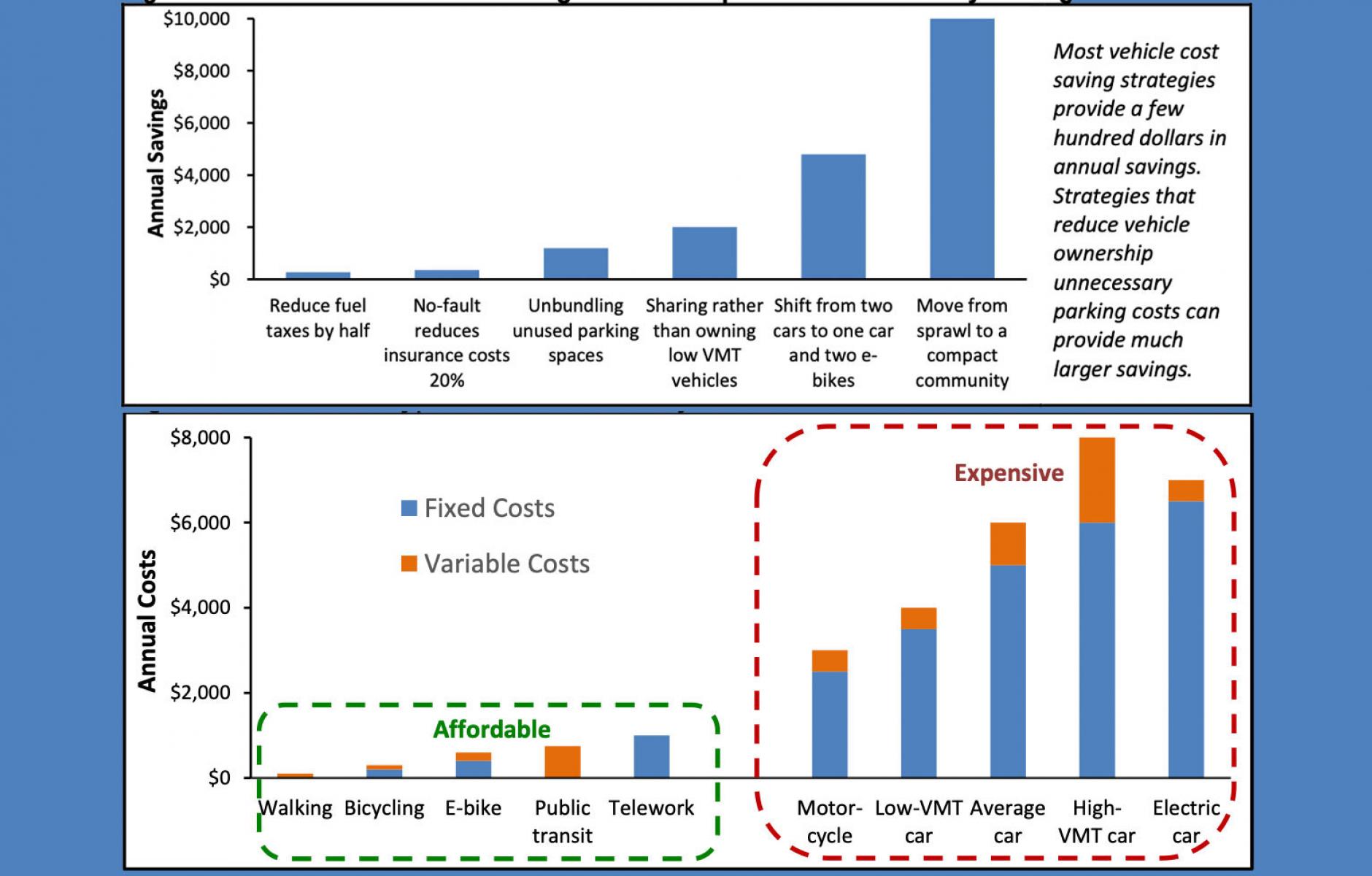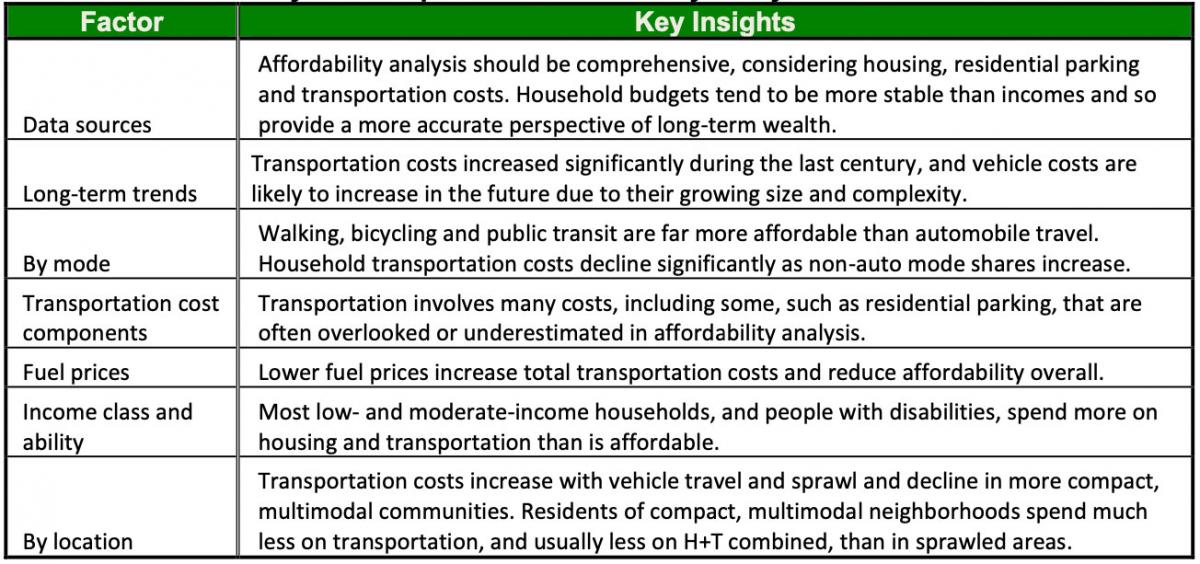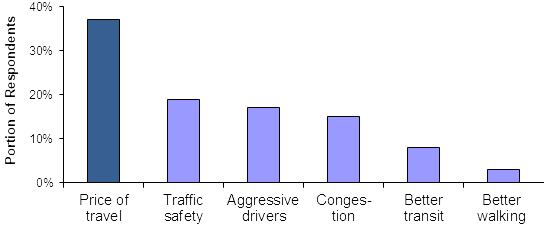
Focusing on transportation affordability
Housing affordability has become a national political issue, but maybe we are looking at affordability in the wrong way. We tend to look at housing costs in isolation. Rarely are household transportation costs given the same treatment, yet they are the second highest cost that households face—typically about half of what they spend on housing.
While housing costs can be reduced through policy, transportation costs are more variable and under the control of individuals and government. Transportation costs can be radically reduced for households based on lifestyle choices and the options made available by planners, according to Todd Litman of the Victoria Transport Policy Institute.
Litman’s report, Evaluating Transportation Affordability: How Planning Can Better Respond to Demands for Lower Cost Travel, argues that transportation affordability is under-appreciated as a planning concept.
“Walking, bicycling, e-bikes, public transit, and telework (telecommunications that substitute for physical travel) have much lower total costs than automobiles. As a result, transportation cost burdens increase with automobile ownership and use. The portion of household budgets devoted to transportation tends to decline as non-auto commute mode shares increase. A shift from low (less than 10 percent) to medium (20–30 percent) non-auto mode shares is associated with large increases in transportation affordability.”

Litman explains there are many ways to make transportation more affordable. Less effective ways include shifting costs to other sectors, such as making parking free or lowering fuel taxes.
By contrast, he says, “The most effective and equitable affordability strategies improve lower-cost modes, provide financial rewards for reduced driving and parking needs, and create more compact and multimodal communities where it is easy get around without driving. In addition to increasing affordability these strategies help achieve other community goals including more independence and opportunity for non-drivers, improved public fitness and health, plus reduced congestion, infrastructure costs, traffic risks and environmental harms. They are win-win solutions.
Transportation affordability increases with Walk Score ratings. This indicates that more compact and multimodal neighborhoods significantly increase transportation affordability and provide many co-benefits.”
Citizens view transportation affordability as important, according to Litman. One National Household Transportation Survey rated it the highest priority issue, above traffic safety and aggressive drivers. This, from 2007 is the only example of a survey with that particular question, highlighting how unimportant transportation affordability is to the national discourse. I don’t ever see household costs highlighted as a major factor in the design of a public transportation project.

The biggest factors in reducing household transportation cost are moving from sprawl to a walkable community, and reducing household cars from two to one. In a world metro areas where 98 percent of land is planned to accommodate driving as the primary transport mode, this choice is difficult for most households. Litman recommends planners follow these steps to help households lower transportation costs:
- Apply a sustainable transportation hierarchy in planning and funding. Align individual planning decisions to support strategic goals. Litman says that the sustainable transportation hierarchy is well-established and there is strong overlap with affordability.
- Improve and encourage affordable modes including walking, bicycling, e-bikes, public transit, car-sharing and telework.
- Spend at least the portion of transportation budgets on affordable modes as their potential mode shares. For example, spend up to 20 percent of transportation funding on walking and bicycling improvements if that would give them a 20 percent mode share, and more if justified to achieve strategic goals and make up for past underinvestments.
- Support vehicle sharing (carsharing and MaaS) and encourage households to minimize private vehicle ownership.
- Implement Smart Growth policies that create compact, multimodal neighborhoods where it is easy to use affordable modes.
- Increase affordable housing in multimodal neighborhoods.
- Apply complete streets policies to ensure that all streets accommodate affordable modes.
- Reform parking policies to increase efficiency. Unbundle and cash out free parking so non-drivers are no longer forced to subsidize parking facilities they do not need.
- Implement TDM incentives that encourage travelers to use affordable and resource-efficient modes when possible.
Households should spend no more than 15 percent of their budget on transportation. With a better built environment, that figure can be reduced to 10 percent or less. At the same time, households can be healthier and more active. There is no question that we can and should reduce housing costs. Reducing transportation is an equally worthy goal.




